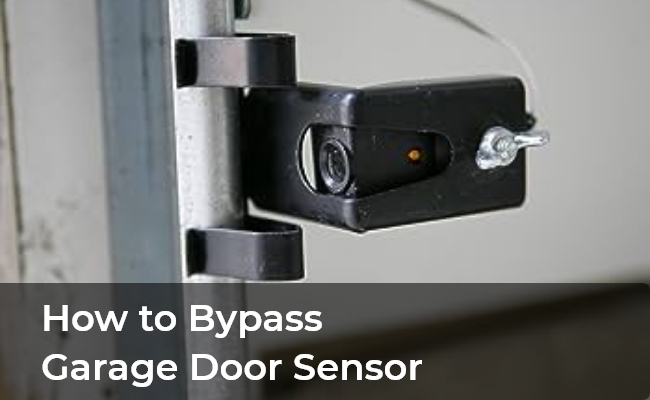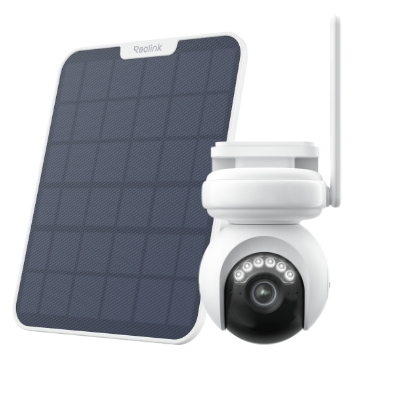How to Bypass Garage Door Sensor: 2024 Full Guide

Garage door sensors play a crucial role in ensuring safety, but occasionally, they can cause issues that affect the proper functioning of an automatic garage door. If you've noticed blinking sensor lights or your garage door isn't closing as it should, it may indicate a problem with the sensors themselves. Fortunately, there are four solutions to help you bypass the sensors. In this article, we will guide you on bypassing garage door sensors when necessary.
Please check out our comprehensive guide on how to protect burglar intruding your home if you are interested in learning more about them.
Why You Need to Bypass Garage Door Sensor Sometimes?
Garage door sensors are crucial safety features, and bypassing them should only be considered in exceptional circumstances. The primary and legitimate reason to bypass a garage door sensor is when it is malfunctioning. For instance, if an external force misaligns the sensors, they may prevent the garage door from closing correctly, even if there are no obstructions in the path. This situation can be quite frustrating, especially when you're simply trying to leave your home.
In such cases, bypassing the garage sensors becomes necessary to resolve the issue and regain normal functionality. However, it should be followed by prompt sensor repair or replacement.
How to Bypass the Garage Door Sensor?
There are 4 effective ways to bypass garage door sensors, let's explore.
1. Setting the door to manual mode
To enable manual mode for your garage door, ensure that the door is either safely propped open or completely closed. Locate the manual release cord, typically a red string hanging down from the door trolley. Pull the release cord downward toward the garage door motor. This action will disconnect the door trolley from the automatic opener carriage, granting you the ability to manually operate the garage door.
The automatic opener carriage, responsible for the door's movement, relinquishes control when disconnected, allowing you to manually lift or lower the door.
2. Disconnecting garage door sensors
To bypass the garage door sensor system, close the garage door and disconnect the power to the automatic door opener. Use wire cutters to trim the wires from the garage door sensor, leaving approximately five inches of wire attached to the house; then, secure the exposed wire end with electrical tape.
Next, align both sensor eyes to face each other and affix them in place with tape. Reconnect the severed sensor wires directly to the garage door opener. Each sensor comprises two wires, one white and one black. Connect the two white wires together and attach them to the white terminal on the door opener. Similarly, connect the two black wires together and then connect them to either the black or gray terminal on the door opener.
To neatly store the newly shortened sensor connections, stack them on top of the garage door opener, preventing them from hanging loosely from the ceiling.
3. Use a reflector
You can employ a reflective surface to bounce the infrared light back toward the sensor. This action will deceive the sensor into perceiving an unobstructed path, enabling you to open your garage door.
4. Use tape
Utilizing a piece of tape is another method for bypassing the sensors. Simply apply the tape over the sensor, causing it to reflect the light back to the sensor. This ruse will lead the sensor to believe that there is no obstruction, granting you the ability to open your garage door.
Why You Shouldn't Bypass Garage Door Sensor?
Garage sensors are a vital safety feature designed to protect against accidents and property damage. When you bypass them, you eliminate a critical mechanism that prevents the door from closing if it detects any obstructions in its path. This increases the risk of accidents, injuries, and potential harm to property.
Moreover, tampering with or bypassing garage door sensors may have legal consequences, as building codes and regulations in many areas mandate their use for safety compliance. Ignoring these regulations could lead to legal issues or insurance complications in the event of an incident.
Furthermore, bypassing garage door sensors can result in unintended problems and long-term costs. By eliminating this essential safety feature, you may inadvertently damage the garage door, opener, or other components if they encounter obstructions that the sensors would have detected. This can lead to costly repairs or replacements down the line.
To enhance the security of your garage, consider installing a security camera for everyday monitoring and control. A great option is the Reolink Altas PT Ultra. This battery-operated CCTV camera comes with a robust 20,000 mAh battery for continuous recording and features ColorX night vision for clear footage even at night.
Industry-leading 4K Continuous Recording Battery Camera
4K UHD Continuous Recording; ColorX Night Vision; Pan & Tilt; Automatic Tracking; All Recordings Stored Locally.
Bonus Tip: Troubleshooting Garage Sensor Problems
To complement the importance of addressing garage sensor issues properly, here are valuable bonus tips to solve garage sensor problems.
Blocked sensor path
Garage door sensors utilize infrared beams to scan the door's pathway for obstructions. When an obstruction is detected, it inhibits the door's operation. Ensure there are no obstacles along the sensor's path, and keep in mind that direct sunlight on one of the sensor lenses can also trigger a blocked sensor path.
Dirty lenses
Dirt and debris have the potential to clog the sensors' lenses, causing them to malfunction. To avoid damaging the delicate lens surface, it's advisable to clean them with a microfiber cloth instead of a coarser cotton or wool rag.
Loose/damaged wires
Inspect both sensors for any signs of loose or damaged wiring. If you spot frayed or exposed wires or wires that are unattached, it's important to cut off the power to the garage door opener at your fuse box. Once the power is disconnected, you can reconnect or replace the wires without the risk of electrical shock.
Sensors not aligned
Begin by verifying whether your sensors are properly aligned with each other. To ensure their alignment, securely tighten the wing nuts on both sensors within their brackets. Additionally, confirm that the brackets are correctly attached to the garage doors, as this plays a crucial role in sensor alignment.
These sensors typically feature green and red indicator lights, indicating their alignment status. Normally, if both sensors display a green light, they are aligned correctly. However, the presence of a red light on one or both sensors suggests that they are misaligned with each other.
If none of these troubleshooting steps yield results, bypassing your garage door sensors is the last resort.
FAQs
1. Will the garage door work without a sensor?
Garage doors equipped with safety sensors should not operate without functional sensors. The sensors are a critical safety feature designed to prevent the door from closing if an object, person, or obstruction is detected in the door's path. Bypassing or disabling these sensors can compromise safety and may lead to accidents or property damage. Using a garage door without functioning sensors is not recommended, as it poses significant safety risks.
2. What does it mean to bypass a garage door?
Bypassing a garage door means disabling or temporarily circumventing certain safety features or components of the garage door system. This is typically done to allow the garage door to operate in situations where the normal functioning of these safety features is temporarily disrupted or when performing maintenance tasks. However, it's essential to note that bypassing safety features should be done with caution and only when necessary, as it can compromise safety.
3. How do garage door sensors work?
In most cases, a photo eye sensor is installed in garage doors. These sensors use an infrared beam between two optical sensors to detect obstructions that might prevent the door from closing safely. If the beam is interrupted, the door won't close, ensuring safety. If there are no obstructions, a remote control can raise or lower the door using a track and pulley system.
4. How can you tell if a garage door sensor is bad?
A malfunctioning garage door sensor can manifest through several signs, including blinking or nonexistent indicator lights on the sensor units, the garage door refusing to close or reversing unexpectedly, misalignment or obstruction of the sensors, issues with wiring connections, or interference from bright sunlight.
Conclusion
While bypassing garage door sensors can sometimes provide a temporary solution to issues, it should only be considered when all other troubleshooting measures have been exhausted and safety precautions are taken.
If you encounter persistent problems with your garage door sensors, it's strongly recommended to consult a professional technician for a comprehensive inspection and proper repairs.
If you like this article and find it helpful, share it with your friends. Got something to say about the garage door sensor? Make sure you leave a comment below!
Search
Be in the Know
Security insights & offers right into your inbox

